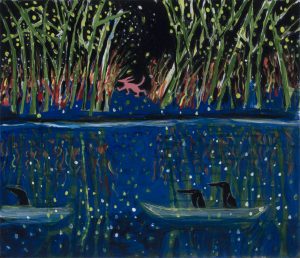Buy the issue in print or as an ebook

Once upon a time there were two sisters and a wise donkey. The frost was early and the winter long. The machete got up and spoke, the street signs spoke, and a beautiful necklace told of its adventures in a world long ago and far away. It happened one day that the birds, who once lived in peace all over the land, grew so plentiful and sang so loudly that nothing else could be heard. The squirrels and rats set out in great armies. A man, a woman, and a child lived together in a house, and the boy grew strong and handsome, until one day he was cast under a powerful spell. The daughter returned but the man and woman had already grown old and sick. Waiting and waiting, like Penelope. One day calamity kicked in the door. Hunger, thirst, massacre, and the white men kept on landing. Follow the footprints. Watch the sky.
What does it mean to say something is fairy tale–like, that it is, like this fall 2019 issue, giving off a fairy-tale vibe? There are no “once upon a times” here; there are no “happily ever afters.” There aren’t even any witches or kings, wolves or billy goats. Read separately, each piece reveals its own purpose and its own strong voice, each with its own animating spirit—the life, the stories, the influences, and urgencies of its author. Yet when you put them all together, they activate some other kind of spirit, not something that influenced the work but that the work itself brought into being—the essence of the whole, which in this case just might be the essence of fairy tales.